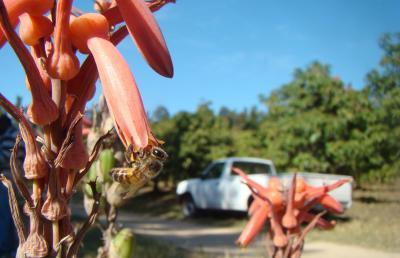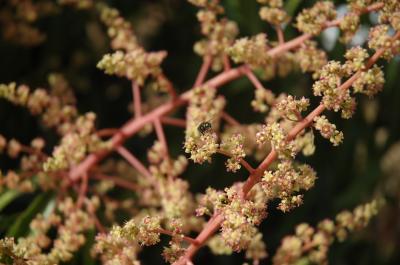Scientists have reaffirmed that pollinator services of large agriculture fields can be enhanced with a simple cost-effective measure - the creation of small patches of native plants within fruit orchards.
While pesticide use and isolation from natural habitat lead to declines in flying visitors and in mango production, the results of a new study show that the presence of small patches of native flowers within large farms can ameliorate such negative impacts, increasing the number of visits of honeybee and wild pollinators to mango, and consequently mango production.
As these patches do not compromise production areas and its maintenance has very low costs, such native flower compensation areas represent a profitable management measure for farmers, increasing cost-effectiveness of cropland. Further studies are needed to determine the optimum size and flower composition of such flower areas that maximizes benefits.

Aloe greatheadii, a native plant common in natural areas near mango plantation, being visited by a honeybee when planted within mango fields. Credit: Luisa Carvalheiro
"Mango farmers in South Africa are aware of the pollination limitation of this crop and invest a substantial amount of money renting honeybee hives to supplement pollination within the large farmland areas. However, while during blooming season, mango fields can have millions of open flowers, those flowers are not very attractive to neither local wild pollinators nor managed honeybees." says the paper's lead author, Luísa Carvalheiro.

While blooming mango fields have a high density of flowers, in South Africa very few visitors are attracted to their flowers. Credit: Luisa Carvalheiro
However, the effectiveness of flower patches is likely dependent on the preservation of remaining patches of natural habitat and judicious use of pesticides.
The study was published in Journal of Applied Ecology





Comments